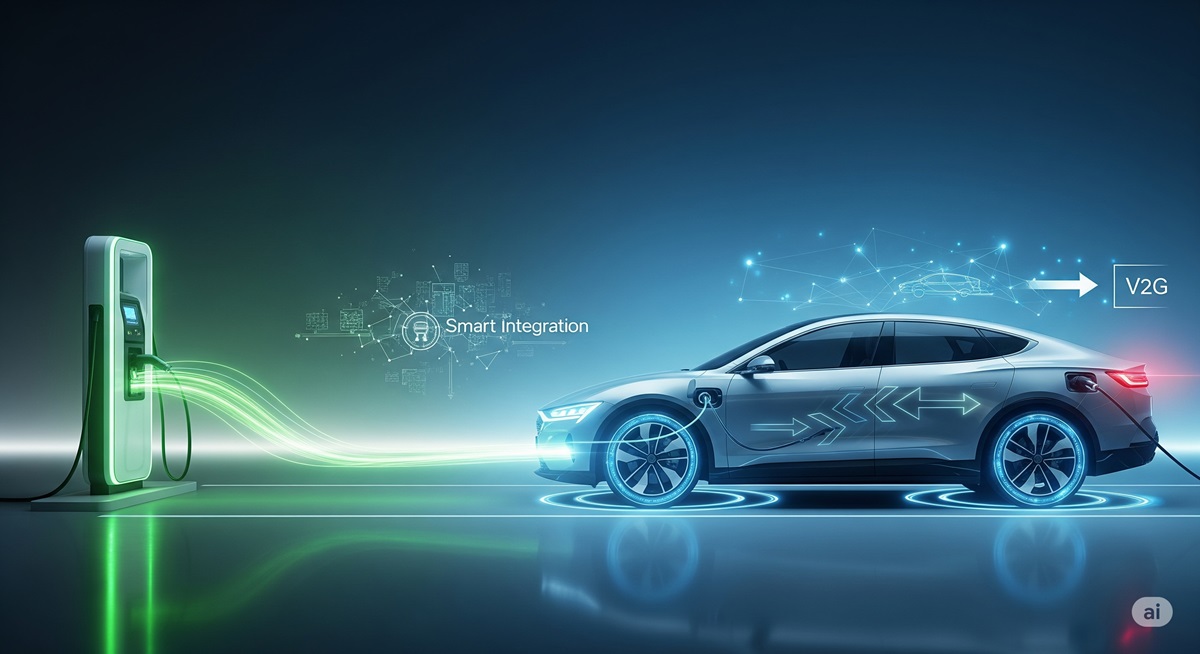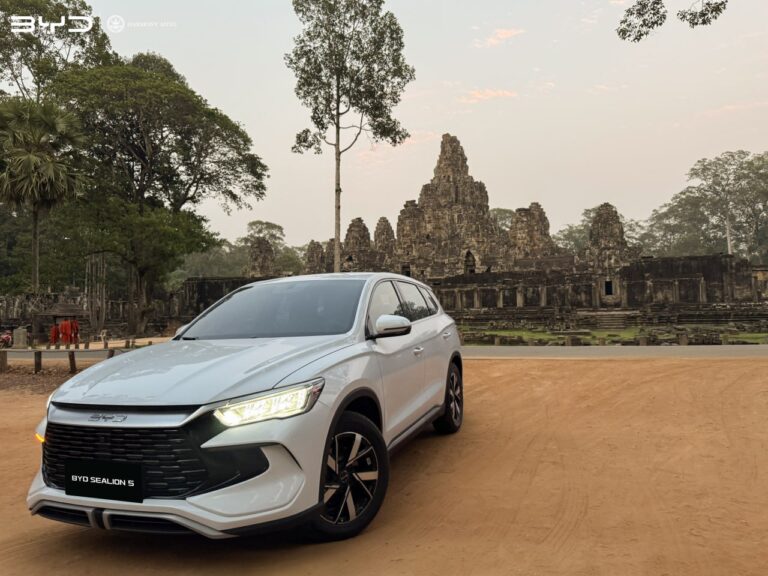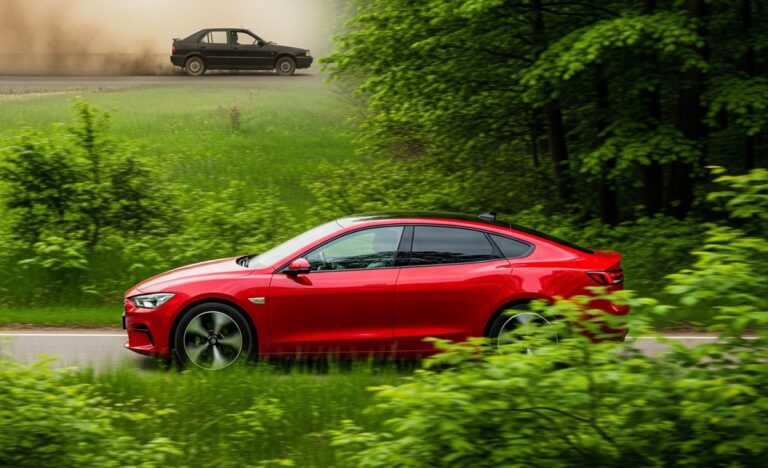EV Charging Revolution: Innovations Making Electric Cars Accessible

The EV Charging Revolution: Innovations Making Electric Cars More Accessible Than Ever Before
The hum of electric motors is steadily replacing the roar of combustion engines as the world hurtles towards a sustainable transportation future. Electric vehicles (EVs) are no longer a niche curiosity; they are a cornerstone of our global commitment to decarbonization and a cleaner planet. Yet, for many years, a persistent question lingered in the minds of prospective EV owners, forming a significant barrier to widespread adoption: the charging conundrum. Concerns about limited range (range anxiety), the time it takes to recharge, and the availability of charging infrastructure often overshadowed the environmental and economic benefits of electric driving.
However, a rapid and transformative EV charging revolution is now underway. Driven by relentless innovation, this revolution is dissolving those historical anxieties, transforming perceived limitations into unparalleled accessibility and convenience. We are witnessing an evolution in how electric cars are powered, making them more integrated, efficient, and ultimately, more appealing to a broader consumer base than ever before. This article will explain the cutting-edge technological advancements and infrastructure developments that are making electric cars more accessible, systematically dissolving range anxiety, and simplifying the entire EV ownership experience.
- The EV Charging Revolution: Innovations Making Electric Cars More Accessible Than Ever Before
- 1. The Roadblocks to Mass Adoption: Understanding Charging Anxiety
- 2. The Need for Speed: Ultra-Fast Charging Powers Convenience
- 3. Beyond the Plug: The Rise of Bidirectional & Wireless Charging
- 4. Smarter Charging, Smarter Grids: The Power of AI & Connectivity
- 5. Seamless Power: Simplifying the Charging Experience
- 6. Expanding Horizons: The Growth of Public & Destination Charging
- 7. The Future is Converging: Creating a Seamless EV Ecosystem
- Conclusion: Accelerating the Electric Revolution
- Frequently Asked Questions (FAQs) About the EV Charging Revolution
1. The Roadblocks to Mass Adoption: Understanding Charging Anxiety
Before we explore the solutions, it’s vital to acknowledge the historical concerns that shaped public perception of EVs. These “roadblocks” were real for early adopters and posed genuine questions for those considering the switch:
- Range Anxiety: Perhaps the most pervasive fear, this was the worry of an EV running out of battery before reaching its destination or a suitable charging point. Early EVs had limited ranges, exacerbating this concern.
- Charging Speed: Unlike a quick five-minute gasoline fill-up, early EV charging times, particularly on standard Level 2 (AC) chargers, could take hours, making long journeys seem impractical.
- Infrastructure Gaps: Many potential buyers worried about the perceived or actual scarcity of public charging stations, especially outside urban centers or for apartment dwellers without home charging options.
- Interoperability: A confusing array of different plug types and payment systems across various charging networks added complexity and frustration for users.
- Cost of Charging: While often cheaper per mile than gasoline, concerns existed about unpredictable pricing models or the hassle of managing multiple charging apps.
These valid concerns, while diminishing, highlighted the critical need for a more robust, user-friendly, and ubiquitous charging ecosystem to truly unlock mass EV adoption.
2. The Need for Speed: Ultra-Fast Charging Powers Convenience
The most direct attack on charging anxiety has come from the relentless pursuit of speed. The evolution from slower AC (alternating current) Level 2 chargers to powerful DC (direct current) fast and ultra-fast chargers has been a game-changer.
- Technological Leap: We’ve moved from charging speeds measured in kilowatt-hours per hour to kilowatts per minute. Modern ultra-fast DC chargers deliver power at rates of 150 kW, 350 kW, and even experimental prototypes pushing towards 600 kW. This incredible power output is transforming the charging experience.
- Dramatic Time Reduction: The impact is profound. What once took hours can now be achieved in minutes. Many new EVs can charge their battery from 10% to 80% in as little as 20-30 minutes, while some, like the Hyundai Ioniq 5/6 and Kia EV6, can achieve this in as little as 18 minutes on a 350kW charger. This makes stopping for a charge comparable to a traditional gasoline fill-up, seamlessly fitting into a coffee break or a quick meal.
- Impact on Range Anxiety: Ultra-fast charging directly addresses range anxiety by making long-distance travel eminently viable. Drivers know that even if their battery is low, a quick stop can add hundreds of miles of range in minutes, eliminating the fear of being stranded.
- Deployment Growth: The deployment of these high-power chargers is accelerating globally. In the UK alone, Zapmap data from May 2025 indicates over 16,259 rapid and ultra-rapid devices, a 33% year-over-year increase. Crucially, ultra-rapid (150 kW+) chargers saw an 84% year-over-year growth in 2024 and now account for 72% of all rapid charger installs in 2025 to date. Real-world examples like the EVcharge ultra-fast charging HUB in Tarragona, Spain, demonstrate this capacity, featuring a 375 kWp PV plant alongside nine ultra-fast chargers.
3. Beyond the Plug: The Rise of Bidirectional & Wireless Charging
The EV charging revolution isn’t just about faster charging; it’s about fundamentally rethinking how EVs interact with power. Two groundbreaking innovations are leading this shift:
- Bidirectional Charging (Vehicle-to-Everything—V2X): This revolutionary technology allows electric vehicles to not only draw power from the grid but also send it back. This capability unlocks several transformative applications:
- Vehicle-to-Grid (V2G): EVs can act as mobile energy storage units, feeding power back to the grid during peak demand or emergencies, helping to stabilize the grid and integrate more renewables.
- Vehicle-to-Home (V2H): Imagine your EV powering your entire home during a blackout. The Ford F-150 Lightning, for instance, can provide days of backup power to a house.
- Vehicle-to-Load (V2L): Vehicles like the Hyundai Ioniq 5/6 offer an onboard 3.6 kW power outlet, turning the car into a mobile generator for tools, camping equipment, or even another EV.
- Vehicle-to-Vehicle (V2V): The ability to charge another EV from your own, offering a new form of roadside assistance. Automakers like Ford, Hyundai, Kia, Lucid, Nissan (with the Leaf), and increasingly Tesla are integrating these bidirectional capabilities, adding significant utility and value to EV ownership.
- Wireless Charging (Inductive Power Transfer—IPT): This eliminates the need for physical cables altogether. EVs simply park over a charging pad, and power is transferred inductively.
- Benefits: Unparalleled convenience, reduced wear and tear on charging ports, and enhanced safety by removing tripping hazards.
- Future Potential: The long-term vision includes dynamic wireless charging, where EVs can recharge while driving on specially equipped roads, potentially eliminating range anxiety entirely for many journeys. Recent advancements in ferrite-coil optimization are showing significant efficiency gains, with reported 95% efficiency and a 50% increase in coupling efficiency, bringing this futuristic vision closer to reality.
4. Smarter Charging, Smarter Grids: The Power of AI & Connectivity
The integration of artificial intelligence (AI) and advanced connectivity is making the EV charging revolution not just faster but also smarter and more efficient.
- Optimized Charging Schedules: AI-driven charging systems can automatically schedule an EV’s charging during off-peak hours. This minimizes electricity costs for consumers and reduces strain on the grid, especially during periods of high demand.
- Real-time Monitoring & Optimization: AI analyzes vast amounts of data—including energy prices, grid conditions, user preferences, and vehicle battery health—to optimize charging operations. Companies like Driivz are at the forefront of providing AI-powered optimization platforms for charging networks.
- Integration with Home Energy Systems: Smart charging seamlessly links EVs with residential solar panels, home battery storage systems, and smart appliances. This creates a holistic home energy management ecosystem where the EV becomes a flexible energy asset, maximizing self-consumption of renewable energy.
- Grid Resilience & Load Management: As millions more EVs come online, managing their collective power demand is crucial. Smart charging, coupled with V2G capabilities, allows EVs to become active participants in grid balancing, acting as distributed energy resources that can draw or supply power as needed. This helps prevent overloads and enhance overall grid reliability.
- Dynamic Pricing: AI can facilitate dynamic pricing models, automatically adjusting charging times to take advantage of periods when electricity is cheapest or when renewable energy generation (like solar or wind) is abundant.
5. Seamless Power: Simplifying the Charging Experience
Beyond the hardware innovations, the EV charging revolution is also about transforming the user experience, making it as effortless as possible:
- Plug & Charge (ISO 15118): This groundbreaking protocol is set to redefine convenience. With Plug & Charge, an EV driver simply plugs their car into a compatible charger, and the vehicle automatically handles authentication, initiates charging, and manages billing. There’s no need for apps, RFID cards, or credit card swipes. This creates a seamless “fill up and go” experience, mirroring the simplicity of refueling a gasoline car. Its adoption is rapidly growing among charging networks and automakers.
- Standardization Efforts (OCPP, NACS, CCS): The former fragmentation of charging standards was a major headache for EV drivers. Now, significant efforts are underway to ensure interoperability:
- Open Charge Point Protocol (OCPP): Ensures that EV charging stations and their central management systems can communicate seamlessly, regardless of manufacturer.
- CCS (Combined Charging System): Remains a widely adopted standard globally.
- Tesla’s North American Charging Standard (NACS): Tesla’s proprietary connector has achieved unprecedented adoption, with major automakers like Ford, GM, Rivian, Hyundai, and many others committing to integrate NACS into their future EVs and gain access to Tesla’s vast Supercharger network. This signifies a strong move towards a dominant standard in North America, significantly simplifying the charging landscape for consumers.
6. Expanding Horizons: The Growth of Public & Destination Charging
The increasing availability and strategic placement of charging infrastructure are directly addressing the historical “infrastructure gap” and alleviating range anxiety.
- Rapid Network Expansion: There has been a dramatic increase in the number of public charging points across urban, suburban, and increasingly, rural areas. Countries are investing heavily in nationwide charging corridors. In the UK, for instance, Zapmap reports 80,998 public charging points as of May 2025.
- Strategic Placement: Chargers are being installed in high-traffic corridors, workplaces, retail centers, hotels, and increasingly, in multi-unit dwellings (apartments) to cater to diverse needs.
- Government Initiatives: Public funding programs, such as the National Electric Vehicle Infrastructure (NEVI) Formula Program in the US and significant government investments in the UK (with over 120 planning applications for new stations totaling over £500 million approved in the last 18 months), are accelerating deployment.
- Addressing Rural Gaps: Targeted efforts are underway to ensure equitable access to charging infrastructure in underserved regions, pushing charging points beyond major cities and empowering longer-distance travel.
- Diverse Charging Solutions: The expansion isn’t just about fast chargers; it includes a growing number of slower, overnight destination chargers at hotels and workplaces, as well as innovative curbside solutions for urban residents who lack private garages.
7. The Future is Converging: Creating a Seamless EV Ecosystem
The true brilliance of the EV charging revolution lies not in any single innovation, but in their powerful convergence. It’s the synergy of ultra-fast charging speeds, the flexible energy management offered by V2G technology, the intelligence of smart charging, the effortless user experience of Plug & Charge, and the widespread availability of a standardized infrastructure that is collectively transforming EV ownership.
This convergence is systematically dismantling the core barriers of range anxiety and charging inconvenience. The concept of “refueling” an EV is shifting from a dedicated, potentially time-consuming stop to a seamless, integrated process that fits effortlessly into daily life—whether it’s charging at home overnight, at work during the day, or quickly topping up while shopping or dining out. This holistic approach makes owning an electric car not just viable, but potentially more convenient, more cost-effective (through smart charging and potential V2G revenue), and more integrated into a smart home and grid environment than a traditional gasoline vehicle.
Conclusion: Accelerating the Electric Revolution
The EV charging revolution has fundamentally transformed perceived limitations into core strengths, making electric cars more accessible and appealing to a mainstream audience. The relentless pace of innovation, from lightning-fast chargers to intelligent bidirectional systems and seamless user experiences, is dissolving the final hurdles to mass EV adoption.
These advancements are not just technological marvels; they are critical enablers for accelerating the transition to clean transportation. As charging becomes faster, smarter, more convenient, and more widely available, the decision to go electric becomes easier for millions more drivers. The future of EV charging promises even greater speed, intelligence, and ubiquity, solidifying electric cars as the default choice for personal transportation and contributing significantly to a cleaner, more sustainable planet for generations to come.
Frequently Asked Questions (FAQs) About the EV Charging Revolution
Q1: What is “range anxiety,” and how is the EV charging revolution addressing it?
A: “Range anxiety” is the fear of an electric vehicle running out of battery before reaching a charging point. The EV charging revolution addresses this through innovations like ultra-fast chargers (which add hundreds of miles of range in minutes), expanded charging networks, and smart charging solutions that optimize travel.
Q2: How fast are the new ultra-fast EV chargers, and what’s their impact?
A: New ultra-fast DC chargers can deliver power at 150 kW, 350 kW, and even higher, enabling EVs to charge 80% of their battery in as little as 10-30 minutes. This dramatically reduces charging times, making long-distance EV travel much more practical and comparable to gasoline refueling stops.
Q3: What is bidirectional charging (V2G/V2H), and what are its benefits?
A: Bidirectional charging allows an EV to not only draw power from the grid but also send it back (Vehicle-to-Grid, V2G) or power a home (Vehicle-to-Home, V2H). Benefits include providing backup power during outages, potentially lowering electricity bills by selling power back to the grid, and helping stabilize the grid during peak demand.
Q4: How does smart charging make EV ownership more convenient and grid-friendly?
A: Smart charging uses AI and connectivity to optimize when and how an EV charges. It can automatically schedule charging during off-peak hours (when electricity is cheaper), integrate with home solar systems, and help balance the grid by managing demand, making EV ownership more cost-effective and efficient.
Q5: What is Plug & Charge, and why is it important for EV accessibility?
A: Plug & Charge (based on ISO 15118) is a technology that allows an EV to automatically authenticate itself and begin charging simply by plugging into a compatible station, without needing apps, RFID cards, or credit card swipes. It significantly streamlines the charging process, making it as seamless and convenient as refueling a gasoline car.



